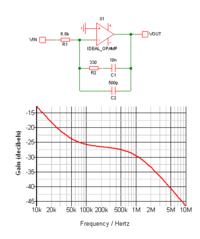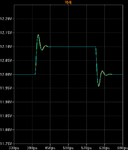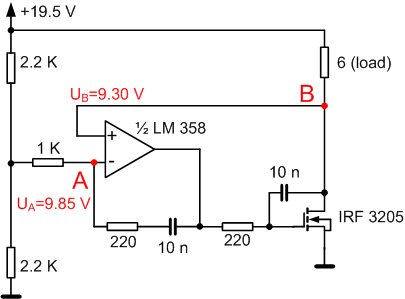godfreyl
Advanced Member level 5

- Joined
- Apr 18, 2012
- Messages
- 1,974
- Helped
- 632
- Reputation
- 1,266
- Reaction score
- 621
- Trophy points
- 1,393
- Activity points
- 12,772
Don't let the terminology confuse you, it's actually pretty simple. Here's a couple of simple RC filters, a low pass and a high pass, with their responses:Phew, thanks - all this pole talk is really quite vague to me...

In both cases we say there's a pole at 50KHz, because that's the frequency above (or below) which the gain rolls down. When the response curves the other way (upwards), it's called a zero.
What I meant was that, all else being equal, fug_total is 0.5MHz with the LM358, but it's 5MHz with the NE5532. So changing the opamp changes the fug.According to your example (0.5MHz --> 5MHz), shouldn't the added criteria be:
5) no added poles below fug_total*10
The filter below has the same response as the MOSFET gain stage with the values I suggested: 330R and 10nF, with Cdg = 500pF.Which brings me to the main point I'm missing: How to find out where those added poles are? For example, how did you calculated the added pole due to Cgd?

There's a pole at 1MHz from 330R and 500pF, and a zero at 50KHz from 330R and (10nF + 500pF).
220R with 3 MOSFETs puts the pole at the same frequency as 330R with 2 MOSFETs. Your choice of 100nF is much more conservative than my 10nF, pushing the zero down to about... um, 7KHz? (without reaching for the calculator). Nothing wrong with that.Oh, and BTW - as I said, it works very well even for 3 MOSFETs but with the values of 220R and 100nF (I came to this empirically, but would like some approximate formula to have some generic solution for this topology), and I was testing on NE5532.








